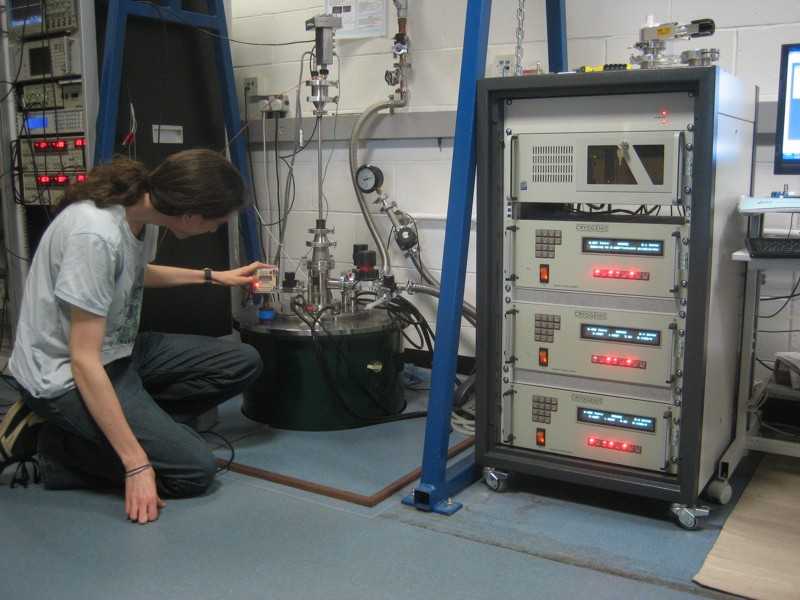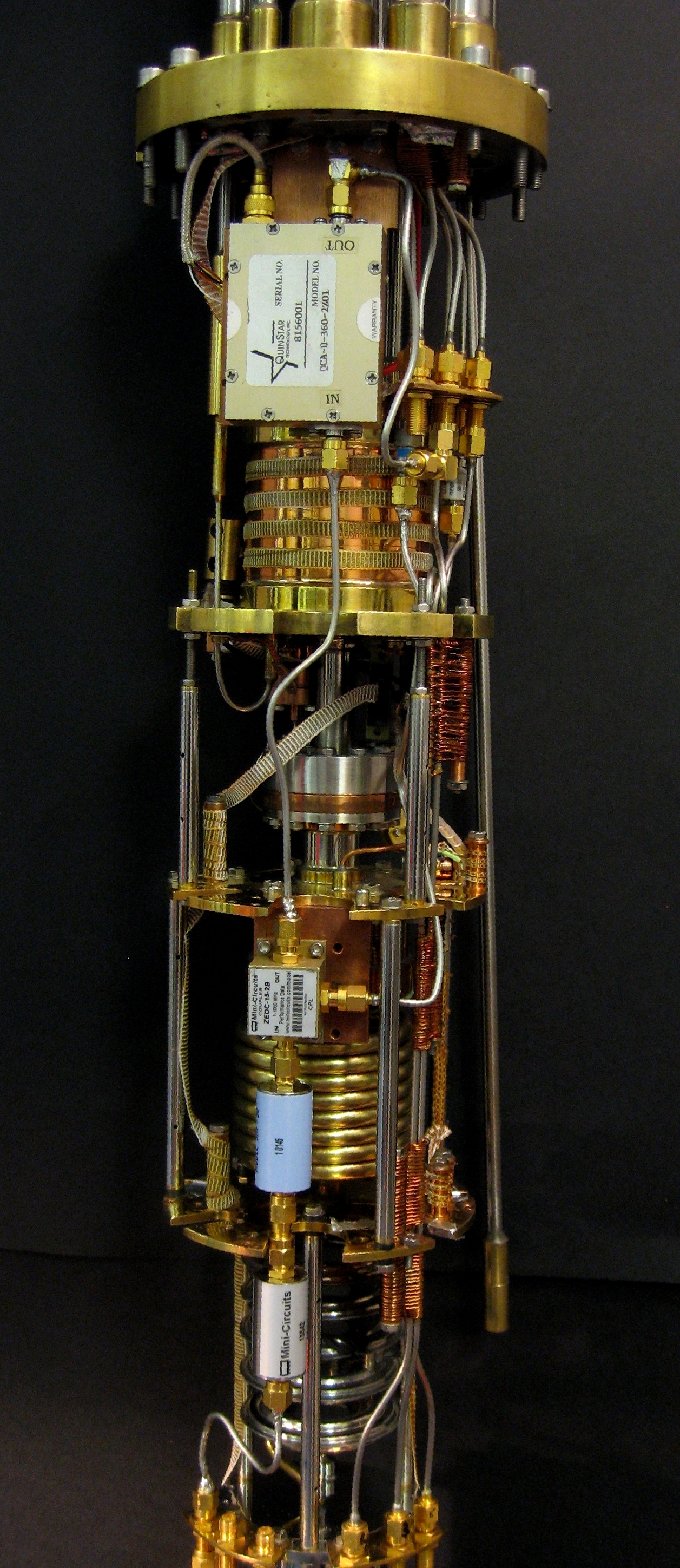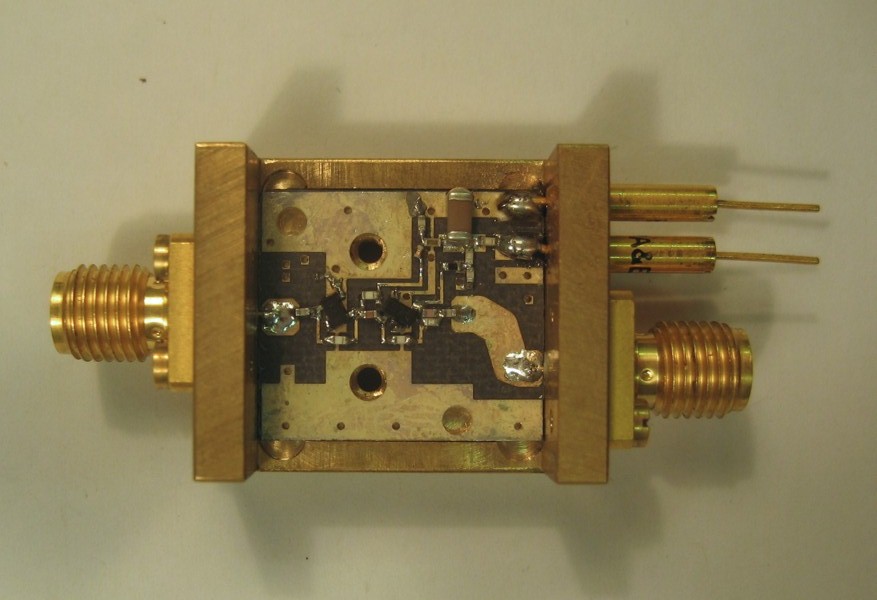We have an excellent range of low temperature facilites in the group allowing samples to be measured at <0.1K and in a variety of magnetic fields.
Vector field cryostat
|
For the spintronics work, we installed a vector field cryostat from Cryogenic Ltd in 2009. This allows for a 1T magnetic field in any direction, an essential feature for high frequency measurements on magnetic samples (there is no possibility of rotating the sample with semi-rigid co-axial cables attached). This cryostat has a VTI allowing 2-300 K, and in addition we can insert our 3He system to reach 0.3 K. We have microwave wiring in the VTI including a 4-8 GHz low noise cryogenic amplifier from the Low Noise Factory. A variety of low frequency and microwave electronics is attached to this cryostat inluduing an Anritsu 20 GHz microwave source that also drives a W-band (75-110 GHz) frequency multiplier from OML. |
 |
Dilution refrigerators
 |
We have 3 dilution refrigerators (one in the ME group) and two in Hitachi Cambridge Research. We have heavily modified the wiring to allow radio-frequency and microwave access to samples. In addition the use of ECCOSORB and low temperature RC filters ensures electron temperatures Te<100mK. We also use microstrips on sapphire to heat-sink the radio-frequency lines. The photo is of a the business end of a Kelvinox 400, and the radio-frequency wiring and reflectometry circuit components are visible. Note the Quinstar amplifier (300 MHz - 400 MHz) and standard room temperature minicircuits components. Incidently, the cryostat for this fridge has an 18 T magnet! Our second main fridge is similarly equipped but has out home-made amplifiers in allowing reflectometry at least between 0.5 and 2 GHz. |
Cryogenic amplifiers
|
In order to perform precision measurements at high frequencies and low temperatures we require cryogenic amplifiers. Typically we would buy these from Quinstar or Low Noise Factory. Recently we have been making our own based on a design from Caltech. These use SiGe HBTs (instead of the more usual HEMTs) to get excellent broadband (0.5-4GHz) and low-noise performance (Tn~4K), with a good input match. Check out this paper Rev. Sci. Instrum. 80, 044702 (2009). If you want some more information please let us know, we may even have a few spare circuit boards. |
 |

